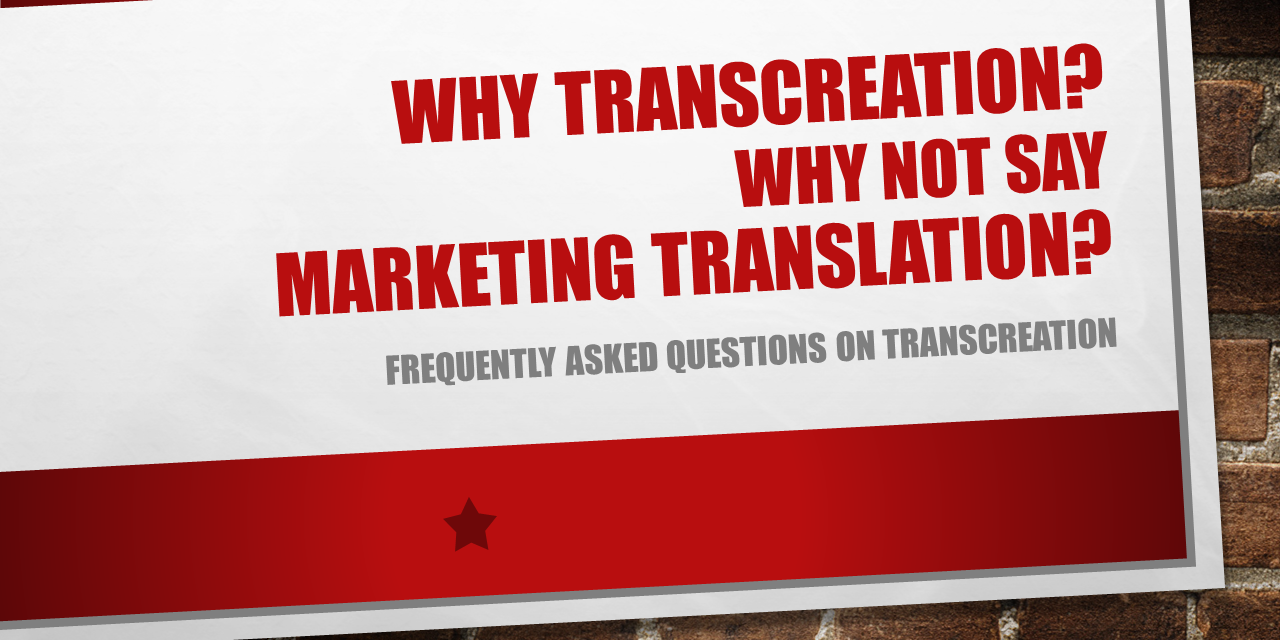A question I am often asked is why I insist on transcreation rather than using the term “marketing translation.”
Wouldn’t marketing translation fit the bill just as well?
No. Not in my book.
My reservations about the use of marketing translation stem from my own experience as a translator of technical marketing documents intended for the use by marketing professionals in their marketing work, and as a transcreator of marketing communication material intended to attract customers. There is a fundamental difference between the two, one that isn’t readily apparent to most people.
When I translate technical marketing documents, I refer to the translation of informative material, such as brand manuals, internal PowerPoint presentations, documents detailing marketing strategies, a company’s most recent market research results, their new segmentation approaches and the like. In this case, I am actually a translator, being faithful to the source and not rewriting any of it. In that role, I am a translator specializing in marketing processes and parlance, but I am not being a transcreator.
Labeling something a marketing translation when you actually mean transcreation can be misleading. It leads your client to believe that all her well-thought-out copy needs, perhaps after weeks of work by her advertising agency, is a faithful and accurate translation, when what it really needs is a transcreation, crafted by someone who knows how to translate, adapt, and rewrite the target text based on a transcreative brief.
That someone would be a transcreator, not a marketing translator.
The above question and answer is just one of many that you will find in Nina’s book “Get fit for the future of transcreation“.







